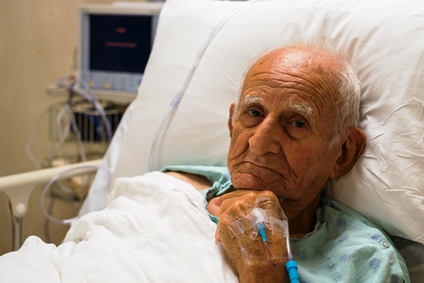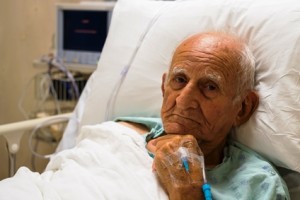
Any list of the burning issues in healthcare will include skyrocketing costs, utilization (both over and under), lack of access, the ongoing surge in chronic disease, the need for greater patient engagement and better patient experience, lack of effective coordination of care, a healthcare finance system that still rewards incidental and procedural events at the cost of prevention and wellness, and the overriding challenge of improving quality while decreasing cost.
Understanding the Interrelationships
 The need to recognize the interrelationship between these issues is critical. Take, for example, utilization. The U.S. Department of Health and Human Services puts the cost of Medicare expenditures for potentially avoidable hospital readmissions within 30 days of discharge alone at more than $17 billion, not to mention the tremendous impact of unnecessary admissions on outcomes (including, at times, mortality). Emergency room visits, often the precursor to unplanned admissions, are projected to number 136.3 million in 2016. One recent study put the cost of unnecessary emergency room visits between $5 and $7 billion each year.
The need to recognize the interrelationship between these issues is critical. Take, for example, utilization. The U.S. Department of Health and Human Services puts the cost of Medicare expenditures for potentially avoidable hospital readmissions within 30 days of discharge alone at more than $17 billion, not to mention the tremendous impact of unnecessary admissions on outcomes (including, at times, mortality). Emergency room visits, often the precursor to unplanned admissions, are projected to number 136.3 million in 2016. One recent study put the cost of unnecessary emergency room visits between $5 and $7 billion each year.
Utilization must be looked at in conjunction with every one of the challenges to improving healthcare:
- Lack of access (e.g., patients receiving care much too far downstream because of the paucity of primary care providers in rural and underserved urban areas)
- A financial system that rewards incidental care at the expense of prevention (e.g., rather than health care than can prevent chronic diseases such as Type 2 diabetes, congestive heart failure, etc., patients require expensive treatment and intervention)
- Lack of coordination of care (e.g., spotty hand-off from acute to post-acute care resulting in re-admission within 30 days).
- And so on…
Solutions to improving care delivery are being rolled out, yet few innovations have been able to account for the integrated nature of these complex issues, and fewer still have found a sustainable financial model for the necessary disruptive innovation.
A Solution for the Most Vulnerable 
One healthcare organization, Wellbridge Health, has created a transformative, integrated solution that addresses these challenges. The Wellbridge approach combines highly trained health coaches with unique healthcare technology, aimed at the most vulnerable populations — dual-eligible Medicare and Medicaid members. Wellbridge works with health plans to help manage a subset of their members, focusing on increasing the members’ understanding of, and ability to manage, their chronic disease (e.g., congestive heart failure, diabetes, etc.) and to do so in a way that keeps them at home and out of ERs and hospitals.
A Critical Partnership
It works like this. Wellbridge conducts a thorough in-home evidence-based assessment and provides the health plan members with an iPhone® and data plan downloaded with an app that asks five questions in a simple and graphically visual way to measure symptomatology relevant to managing their disease. It also provides the members with Bluetooth-enabled devices (scale, glucometer, activity tracker, etc.) that allow their health coaches to monitor critical clinical and lifestyle indicators on a daily basis. This allows health coaches to effect behavioral and physical changes which occurs through regular video chat education and coaching. The Wellbridge team includes nurses who work with the members during their participation in the program to manage disease exacerbations and communicate with members’ primary care physicians.
A Measurable Impact
In a recent pilot, low-income patients diagnosed with congestive heart failure saw a 93% response rate over six months for daily check-ins and video conferences. Moreover, the pilot showed a 45% reduction in hospitalization for all causes and a 50% reduction in hospitalization for CHF diagnosis. Additional outcomes included a 158% return on investment (reduced Medicare spend); dramatic improvements in HEDIS and assessment scores (e.g., 60% improvement in depression PHQ2 results, 36% improvement in incontinence, 40% improvement in falls risk, etc.); and an 89% increase in members’ understanding of and confidence in their ability to manage their chronic disease as measured by a proprietary and validated member confidence measurement tool.
Staying Connected and Engaged
 Wellbridge has found that rather than the technology ‘getting in the way’ of communication between health coaches and members, the members are excited by it and soon begin to view their scheduled video chats as another appointment; albeit one that involves having a champion, an advocate, someone who engages them in their health and partners with them to make a difference. Beyond the benefits of the app and Bluetooth devices, the iPhone is helping members who are often isolated from society be more connected, which also helps with their health outcomes.
Wellbridge has found that rather than the technology ‘getting in the way’ of communication between health coaches and members, the members are excited by it and soon begin to view their scheduled video chats as another appointment; albeit one that involves having a champion, an advocate, someone who engages them in their health and partners with them to make a difference. Beyond the benefits of the app and Bluetooth devices, the iPhone is helping members who are often isolated from society be more connected, which also helps with their health outcomes.
The Holy Grail
Providers, insurers and patients working together to improve health is “the holy grail.” Wellbridge Health’s approach provides the kind of disruptive innovation, a win-win-win that moves the needle on both a micro and macro level for transforming healthcare delivery. Moreover, it embodies what the Institute for Healthcare Improvement notes is the profound need for “the right care at the right time, every time.”




